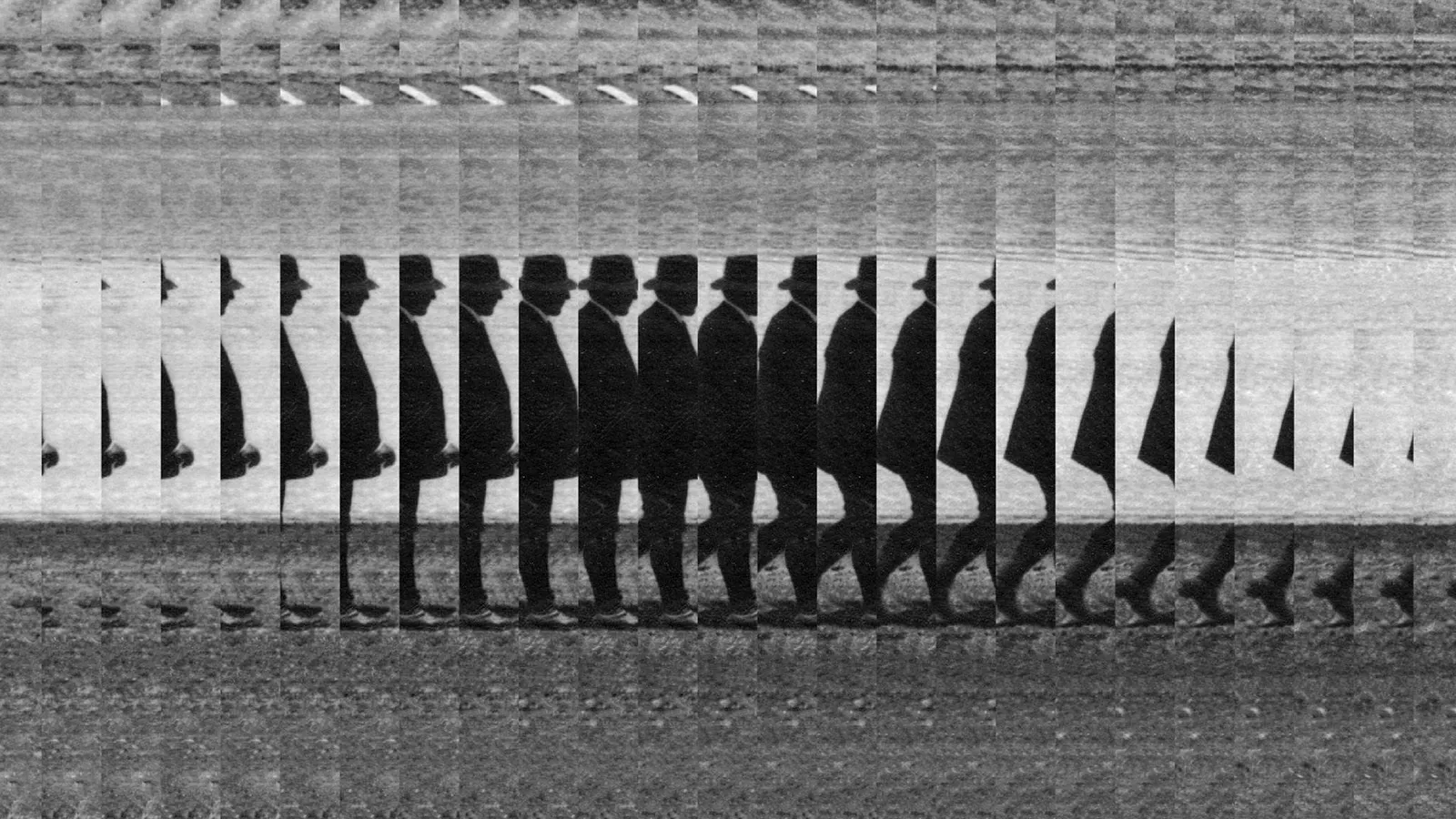Is time travel really possible? Here's what physics says
The ability to jump forward and backwards in time has long fascinated science fiction writers and physicists alike. So is it really possible to travel into the past and the future?

Doctor Who is arguably one of the most famous stories about time travel. Alongside The Time Machine and Back to the Future, it has explored the temptations and paradoxes of visiting the past and voyaging into the future.
In the TV show, the Doctor travels through time in the Tardis: an advanced craft that can go anywhere in time and space. Famously, the Tardis defies our understanding of physical space: it's bigger on the inside than it appears on the outside.
TIME: THE ULTIMATE GUIDE
To mark the 60th anniversary of Doctor Who, we're exploring the big questions about time, including the science of time travel, how clocks have shaped humanity, and even the mind-bending temporal consequences of flying into a black hole. Read and watch more from Time: The Ultimate Guide.
While time travel is fundamental to Doctor Who, the show never tries to ground the Tardis' abilities in anything resembling real-world physics. It would be odd to complain about this: Doctor Who has a fairy-tale quality and doesn't aspire to be realistic science fiction.
But what about in the real world? Could we ever build a time machine and travel into the distant past, or forward to see our great-great-great-grandchildren? Answering this question requires understanding how time actually works – something physicists are far from certain about. So far, what we can say with confidence is that travelling into the future is achievable, but travelling into the past is either wildly difficult or absolutely impossible.
Let's start with Albert Einstein's theories of relativity, which set out a description of space, time, mass and gravity. A key outcome of relativity is that the flow of time isn't constant. Time can speed up or slow down, depending on the circumstances.
"This is where time travel can come in and it is scientifically accurate and there are real-world repercussions from that," says Emma Osborne, an astrophysicist at the University of York, in the UK.
For example, time passes more slowly if you travel at speed, though you need to start approaching the speed of light for the effect to be significant. This gives rise to the twin paradox, in which one of two identical twins becomes an astronaut and whizzes around in space at close to the speed of light, while the other stays on Earth. The astronaut will age more slowly than their Earthbound twin. "If you travel and come back, you are really younger than the twin brother," says Vlatko Vedral, a quantum physicist at the University of Oxford, in the UK. Twins Scott and Mark Kelly did this for real when Scott spent months in space, albeit not at speeds close to that of light.
Similarly, time passes more slowly for you if you are in an intense gravitational field, such as a black hole. "Your head is ageing quicker than your feet, because Earth's gravity is stronger at your feet," says Osborne.
Doctor Who used this as the setup for season 10 finale World Enough and Time, in which the Twelfth Doctor and his friends are trapped on a spaceship close to a black hole. At the front of the craft, closer to the black hole, time passes more slowly than at the rear. This means the small group of Cybermen at the rear of the craft are able to develop into a huge army in, from the Doctor's point of view, a matter of minutes. This effect of gravity on time also features in the plot of the film Interstellar.
In our everyday lives, these relativistic effects are too tiny to be noticed. But they do affect the satellites that we use for global positioning system (GPS). "The clocks above click faster than the clocks on Earth", and must be constantly readjusted, says Osborne. "If we didn't, Google Maps would be wrong about 10km (six miles) a day."
Relativity means it is possible to travel into the future. We don't even need a time machine, exactly. We need to either travel at speeds close to the speed of light, or spend time in an intense gravitational field. In relativity, these two acts are essentially equivalent. Either way, you will experience a relatively short amount of subjective time, while decades or centuries pass in the rest of the Universe. If you want to see what happens hundreds of years from now, this is how to do it.
In contrast, going backwards in time looks far, far harder.
"It may or may not be possible," says Barak Shoshany, a theoretical physicist at Brock University in St Catharines, Canada. "What we have right now is just insufficient knowledge, possibly insufficient theories."
In theory, it is possible for space-time to be folded like a piece of paper, allowing a tunnel to be punched through
Relativity offers some options for backwards time travel, but this time they are much more theoretical. "People tie themselves up in knots trying to find ways to rearrange space-time in order to make time travel to the past possible," says Katie Mack, a theoretical cosmologist at the Perimeter Institute for Theoretical Physics in Waterloo, Canada.
However, this doesn't look like a promising approach for several reasons.
"We don't know whether this exists anywhere in the Universe," says Vedral. "This is really purely theoretical, there's no evidence."
It's also not at all obvious how we could make such a thing. "Even if we had much greater technological powers than we currently do, it seems unlikely that we would be able to create closed time-like curves on purpose," says Emily Adlam, a philosopher at Chapman University in California, US.
Even if we could, says Vedral, we wouldn't want to. "You would literally be repeating exactly the same thing over and over again," he says.
Doctor Who used a similar setup in the classic episode Heaven Sent, in which the Doctor lives the same few hours over and over again for billions of years. However, this didn't involve a closed time-like curve, but rather repeated use of a teleporter.
In a similar vein, in a 1991 study physicist Richard Gott set out a mathematical description of a wild scenario in which two "cosmic strings" moved past each other in opposite directions. According to his calculations, this would create closed time-like curves looping around the strings.
That sounds handy, but where might we find a pair of cosmic strings? They are hypothetical phenomena that may have formed in the very early Universe, according to some theories. None have ever been detected. "We don't have any reason to believe cosmic strings exist," says Mack. Even if they do exist, it would be an incredible stroke of luck to find two moving neatly in parallel. "We don't have any reason to believe that would happen."
WHY IS THE TARDIS A POLICE BOX?
The Tardis allows Doctor Who to travel through time. It also has an iconic appearance. Owing to a faulty camouflage system, it has got stuck in the form of an old British police box. Within the show, the camouflage function is called the chameleon circuit, which is a distressing mistake because chameleons mostly change colour to signal to each other, not to disguise themselves.
There is another phenomenon that is seemingly allowed by relativity: wormholes. In theory, it is possible for space-time to be folded like a piece of paper, allowing a tunnel to be punched through to create a shortcut between two widely-separated points. "Wormholes are theoretically possible in general relativity," says Vedral.
However, again, the problems quickly mount up. First, we have no evidence that wormholes actually exist. "It's been shown mathematically that they can exist, but whether they exist physically is something else," says Osborne.
What's more, if wormholes do exist, they will be incredibly short-lived. "Often wormholes are described as two black holes that have joined to each other," says Osborne. This means a wormhole would have an incredibly intense gravitational field. "It would collapse under its own gravity."
Real wormholes would also be microscopically tiny. You couldn't fit a person, or even a bacterium, through one.
In theory, both these problems can be solved – but this requires an enormous amount of something called "negative energy". This is something that may occur on the absolute tiniest scale, within spaces smaller than atoms. An energy field must have an overall positive energy, but there can be tiny pockets of negative energy within it, says Osborne. "What you'd want is these tiny pockets of locally negative energy expanded," she says. "I don't think that's possible in any way."
Vedral sums it up: "It doesn't sound like a very realistic proposal."
So much for time travel based on relativity. What about the other great theory of the Universe: quantum mechanics?
Whereas relativity describes the behaviour of large objects like humans and galaxies, quantum mechanics describes the very small – in particular, particles smaller than atoms, such as electrons and photons. On these subatomic scales, physics operates in ways that confound our intuitions.
One of the peculiar observations that has emerged from the study of the quantum realm is non-locality. A change in a particle's state in one location can instantaneously influence another "entangled" particle somewhere else – something Einstein referred to as "spooky action at a distance". This has been "shown experimentally many times" in Nobel Prize winning research, says Adlam.
"A lot of physicists are very unhappy with the possibility of non-locality," says Adlam. That's because, for the effect to be instantaneous, the information must be conveyed from place to place at faster than the speed of light. This is supposed to be impossible.
In response, some physicists have proposed alternative ways to interpret the experiments. These interpretations get rid of the non-locality – but in doing so they mess with our understanding of time.
"Instead of having an instantaneous non-local effect, you would just send your effect into the future, and then at some point it would turn around and go back into the past," says Adlam. "It would look instantaneous." But in reality, the effect would have gone on a journey into the future and back again.
This interpretation appears to introduce "retrocausality": that is, events in the future having an effect on the past. This goes against our intuition: we imagine events occurring in a straight line, from the past to the present to the future. In these peculiar quantum setups, information may be travelling into the future and then back into the past.
The first thing to note is that this interpretation of the experiments is far from universally accepted. Plenty of quantum physicists argue that introducing retrocausality is just as unsettling as introducing non-locality, or even worse.
Even if retrocausality is real, it probably won't help us become Time Lords. "Retrocausality's not quite the same thing as time travel," says Adlam.
For one thing, our observations of non-locality have all involved tiny numbers of particles. Scaling up to a human, or even something smaller like a piece of paper, would be an enormous challenge.
It isn't even possible to send a message into the past, says Adlam. "The retrocausality is very specifically hidden by the way it's implemented."
This is best understood by thinking through an experiment. Suppose Adam conducts a measurement in the lab. However, the result he gets is dependent on a measurement that Beth does later. In other words, Beth's experiment in the future controls the outcome of Adam's experiment in the past. However, this only works if Beth's experiment destroys all the records of what Adam did and saw.
"You sort of in some sense would be sending a signal to the past, but only by destroying all the records of everything that happened," says Adlam. "You wouldn't be able to make practical use of that, because you necessarily had to destroy the records of succeeding and sending that signal."
So there we have it. On our current understanding of the Universe, we could potentially travel into the future, but travelling into the past may well be a total no-no.
The only remaining loophole is that the theories this is based on are incomplete. Relativity and quantum mechanics work very well for certain aspects of the Universe, but they also aren't compatible. This suggests we need a deeper theory that unifies the two, but despite decades of effort we don't have one. "Until we have that theory, we cannot be sure," says Shoshany.
Of course, there is another way of looking at it: in the time it has taken you to read this article, you've already travelled seven minutes or so into the future. You're welcome.
-bbc






